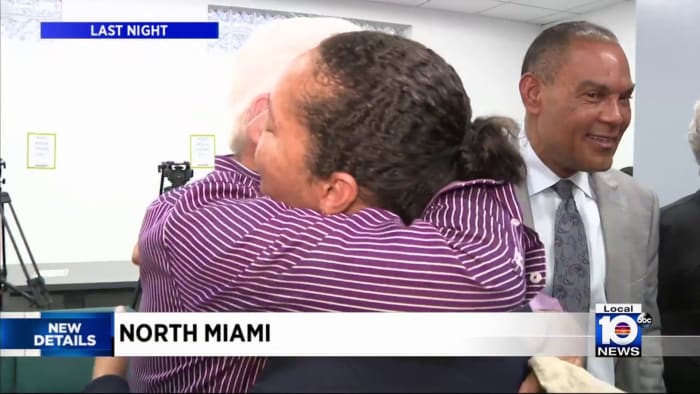Health
10 surprising facts about peanut allergies, according to a pediatric immunologist
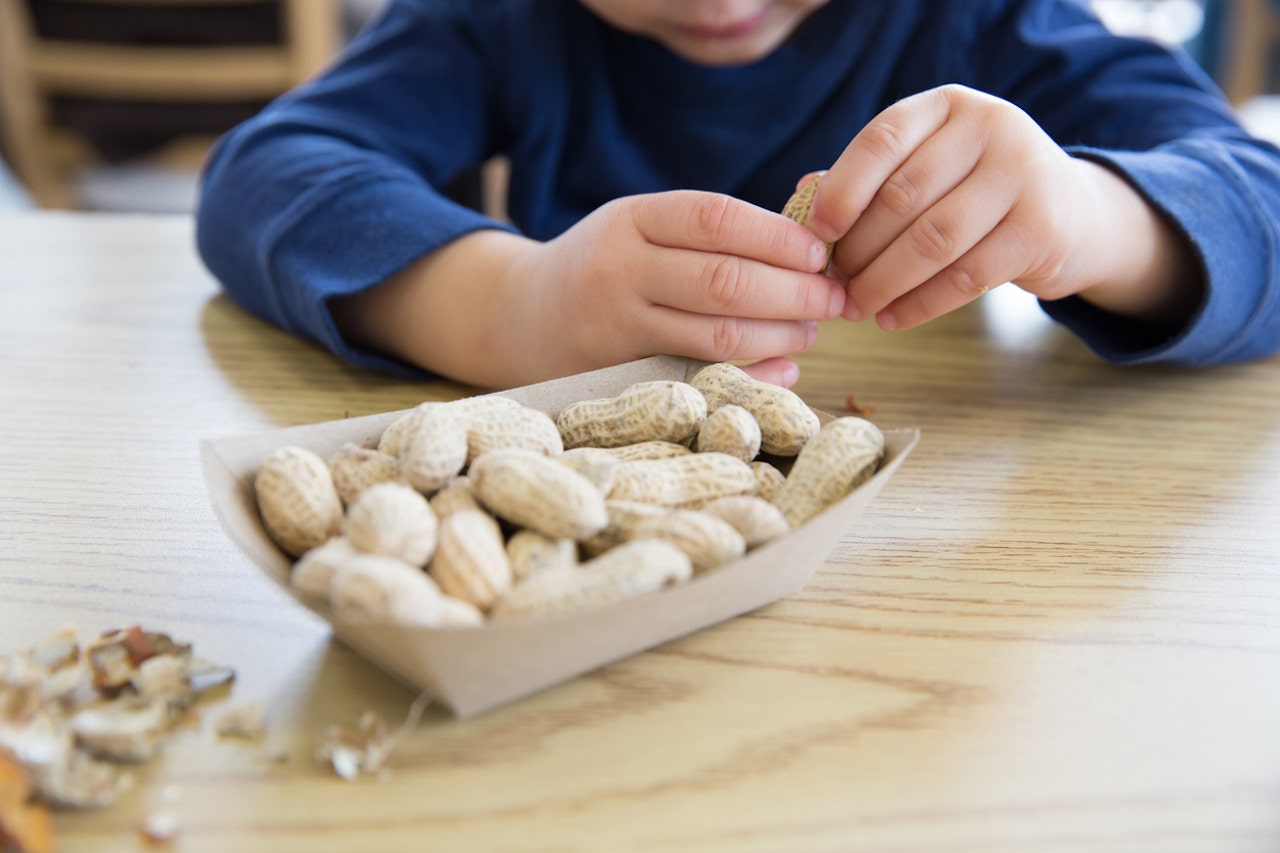
More than six million people in the U.S. have an allergy to peanuts, according to Food Allergy Research and Education (FARE).
Nearly 1.6 million of these sufferers are kids and teens.
“The recent news of deaths and peanut allergies reminds us that consumers are choosing avoidance over cutting-edge therapies that might have saved their lives,” said Dr. Rani Maskatia, a pediatric and adult allergist and immunologist in California.
FDA APPROVES ALLERGY DRUG TO LESSEN SEVERITY OF REACTIONS TO PEANUTS, DAIRY, OTHER FOODS
Maskatia, who is also medical director with Latitude Food Allergy Care, a network of clinics providing testing and treatment for food allergies, shared with Fox News Digital 10 surprising facts about peanut allergies.
1. A peanut allergy results from an immune system reaction
A peanut allergy develops when the immune system reacts to major proteins found in peanuts as if they are harmful invaders, according to Maskatia.
More than six million people in the U.S. have an allergy to peanuts, according to Food Allergy Research and Education (FARE) — and nearly 1.6 million of them are kids and teens. (iStock)
“The immune system fights off the proteins, resulting in a wide range of symptoms, sometimes impacting multiple systems of the body — skin, gastrointestinal, respiratory or cardiovascular,” she said.
2. It’s unclear why peanut allergies are becoming more common
Cases of peanut allergy have steadily increased in recent history, Maskatia said.
“This may result from many variables in our society — from environmental changes to shifts in our diets over the generations and even decades of (now outdated) recommendations to avoid peanut-based foods altogether in very young children,” he said.
3. Peanut allergy reactions are usually the result of accidental ingestion
Despite increased awareness, accidental exposures continue to occur, Maskatia noted.
GLUTEN-FREE LIFESTYLE: DEBUNKING MYTHS AND DECIDING IF THE DIET IS RIGHT FOR YOU
“Even if a certain food does not intentionally contain peanuts, cross-contact (i.e., accidental contact with peanuts) can still result in an allergic reaction,” she warned.
4. There are varied symptoms of peanut allergies
An allergic reaction to peanuts can manifest in a wide range of symptoms, from mild discomfort to severe life-threatening anaphylaxis, according to Maskatia.

An allergic reaction to peanuts can manifest in a wide range of symptoms, from mild discomfort to severe life-threatening anaphylaxis. (iStock)
Symptoms can include hives; skin redness or swelling; itching or tingling in the throat or mouth; runny nose; red, watery eyes; swelling of the tongue and/or lips; eye swelling; nasal congestion; stomach cramps and/or abdominal pain; diarrhea; nausea or vomiting; difficulty breathing and/or wheezing.
5. Children and adults with peanut allergies are at risk for anaphylaxis
Peanut allergy is the most common allergy associated with anaphylaxis, which is a severe, potentially life-threatening allergic reaction.
Signs of anaphylaxis can include pale or bluish tint on the skin, throat constriction, shortness of breath and/or wheezing, difficulty breathing, confusion and/or dizziness, and a weak and rapid pulse.
RED WINE HEADACHES COULD BE CAUSED BY THIS INTRIGUING CULPRIT, STUDY FINDS
“Although fatalities are very rare, if anaphylaxis occurs, access to immediate medical treatment is critical,” Maskatia advised.
“Everyone with a doctor-diagnosed peanut allergy should create an emergency anaphylaxis plan to minimize response time, including carrying two epinephrine auto-injectors accessible at all times.”
6. Testing and diagnosis can begin in infancy
Babies as young as four months old can be tested for peanut allergies, Maskatia noted.
“Testing that includes blood work and skin testing can ensure that diagnoses are as accurate as possible,” she told Fox News Digital.
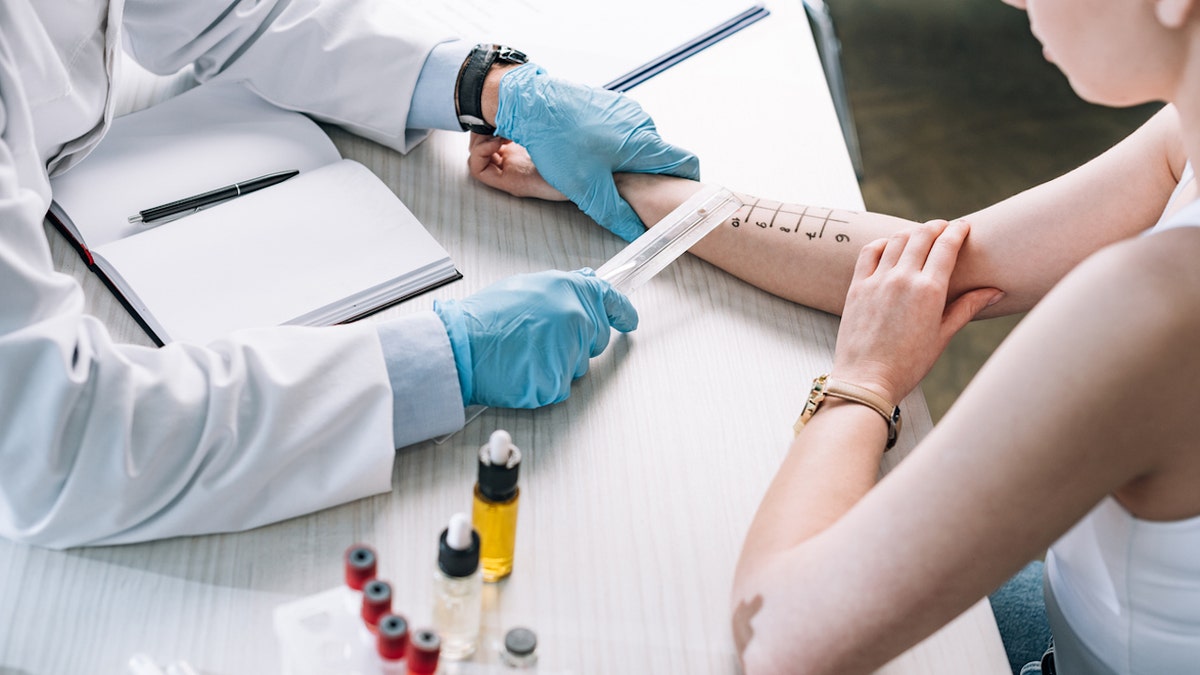
“Testing that includes blood work and skin testing can ensure that diagnoses are as accurate as possible,” an allergist told Fox News Digital. (iStock)
“Blood work may consist of specific IgE tests and component testing, which help distinguish which proteins in the peanut a patient might be most likely to react to.”
7. A peanut allergy diagnosis doesn’t always mean all nuts must be avoided
Peanuts are actually legumes, which means other types of nuts — such as walnuts, almonds, hazelnuts and cashews — are often safe to eat, according to Maskatia.
“However, since it is possible to be allergic to both peanuts and to tree nuts and seeds, a clinical evaluation with an allergist is advised,” she said.

Peanuts are actually legumes, which means other types of nuts — such as walnuts, almonds, hazelnuts and cashews — are often safe to eat, according to an expert. (iStock)
“Once the patient has clarity about which foods are allergies, they should freely eat the foods they are not allergic to, ensuring diversity of diet and reducing the risk of future sensitizations to other foods.”
8. An allergic reaction could be triggered by non-food items
Peanut proteins can also be present in vitamins, medications, skin creams, cosmetics, sunscreen, craft materials, toy stuffing, pet food, bird feed and even ant baits or mousetraps, Maskatia warned.
9. An allergy can be outgrown over time
If you suspect you’ve outgrown a peanut allergy, follow-up testing with an allergist is recommended, Maskatia said.
“If an allergist suspects through blood work and skin tests that you might have outgrown the allergy, an oral food challenge may be recommended,” she said.

Peanut allergy is the most common allergy associated with anaphylaxis, which is a severe, potentially life-threatening allergic reaction. (iStock)
An oral food challenge is a step-by-step process in which the patient — under the supervision of a trained clinician — consumes small amounts of a suspected allergen over a period of three to four hours.
“This is done with the expectation that you’ll be able to consume the peanuts safely,” Maskatia said.
CLICK HERE TO SIGN UP FOR OUR HEALTH NEWSLETTER
“Conversely, because peanut allergies can have severe or life-threatening reactions, failing to obtain a clinical diagnosis when there is a suspected history of reaction can present significant health and safety risks,” she warned.
10. Peanut allergies can be treated
Maskatia recommends a treatment called oral immunotherapy (OIT), which she said is approximately 85% effective for single or multiple food allergies and is safe for all ages.
“It is expected that in the next decade, there will be more treatment options for people with peanut allergies.”
“Over time, the OIT process continually exposes the patient to increasing amounts of an allergen,” she said.
“The body is gradually desensitized and learns to adapt to the allergen. This decreases dietary restrictions and increases protection against severe or life-threatening reactions due to accidental exposure.”
Palforzia is an FDA-approved drug for peanut allergy treatment, Maskatia pointed out, and the FDA also recently approved Xolair (omalizumab) for treating all food allergies, including peanut allergy.
“It is expected that in the next decade, there will be more treatment options for people with peanut allergies,” she said.
For more Health articles, visit www.foxnews.com/health.

Health
The Oatzempic Diet Is Going Viral, but Does It Work? Here’s How To Tap Real Weight Loss Benefits
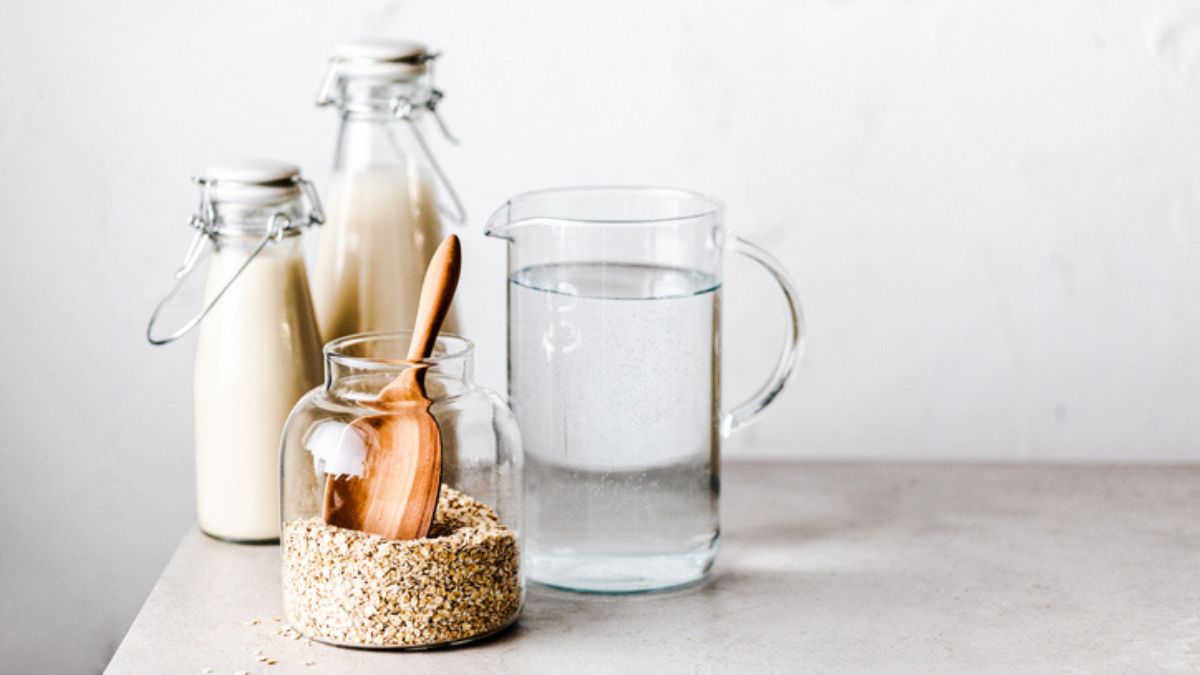
Sign Up
Create a free account to access exclusive content, play games, solve puzzles, test your pop-culture knowledge and receive special offers.
Already have an account? Login
Forgot your password?
Get back to the Sign In
Use left and right arrow keys to navigate between menu items.
Use escape to exit the menu.
Health
Grieving during Mother’s Day: 5 tips for navigating the first holiday after losing a mom
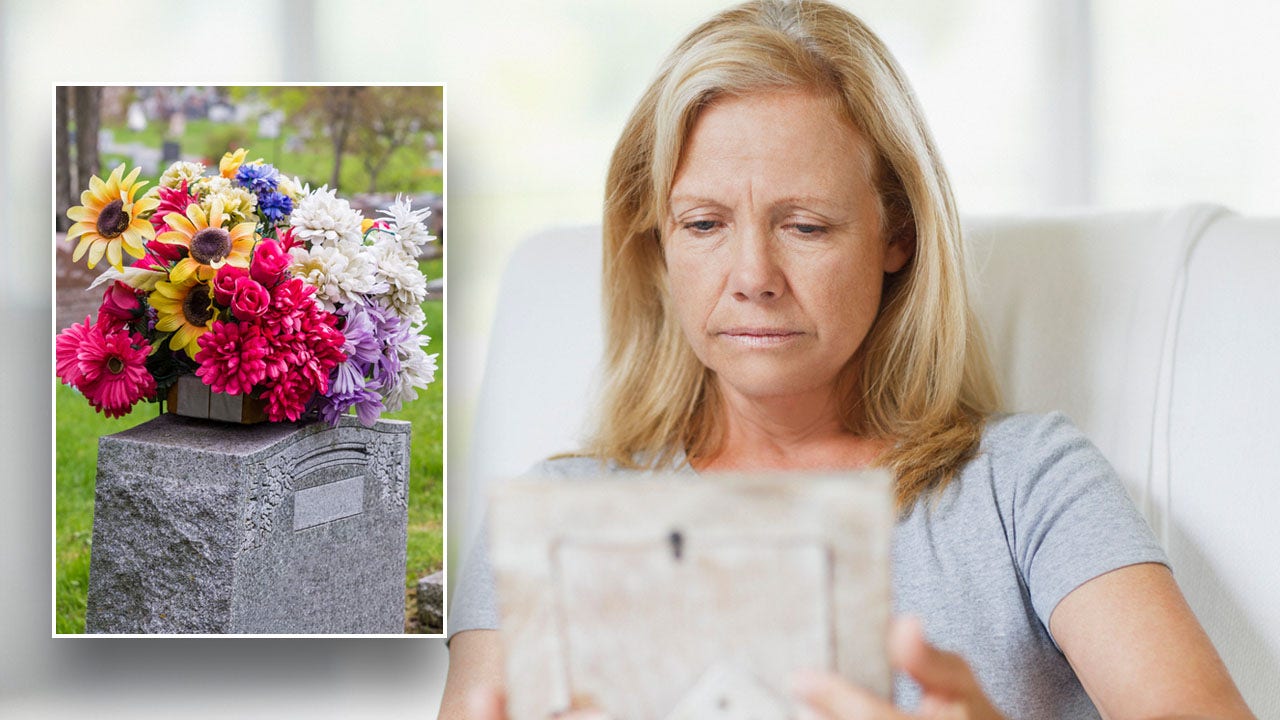
Mother’s Day is a celebration for most. Yet for those who have lost their moms, it can be a difficult day marked by grief and isolation.
“The first year after any loss can be awful, but the holidays stand out in particular,” noted Rebecca Feinglos, a certified grief support specialist in North Carolina and founder of Grieve Leave, an online community to support grievers.
“Your first Mother’s Day after the death of your mom can make her absence feel even more real. It’s a stark reminder of the permanence of the loss.”
3 SURPRISING LESSONS AFTER LOSING A SPOUSE AND TRYING TO MOVE FORWARD IN LIFE: ‘STILL EVOLVING’
For those who had a close bond with their mother, Feinglos said the absence can feel like a “gaping hole” in their everyday lives.
“And for those whose relationships with their mothers were less than ideal, Mother’s Day can bring up a whole different set of emotions,” she said.
For those who have lost their mothers, Mother’s Day can be a difficult day to manage. A certified grief support specialist (not pictured) shares insights and help for coping. (iStock)
“There may be a mix of grief for the relationship they never had, along with anger or resentment over past hurts.”
“The key is to be intentional about how you want to spend the day.”
It doesn’t help that Mother’s Day is a highly publicized holiday with such an emphasis on the mother-child relationship, Feinglos said.
“Everywhere you turn, there are advertisements, social media posts and conversations centered around celebrating mothers,” she said.
MOTHERS SHARE STORIES OF THEIR LIVES, PLUS TIPS AND INSPIRATION, IN ‘LOVE, MOM’ BY DR. NICOLE SAPHIER
“For those who have recently lost their mom, this constant barrage of Mother’s Day messaging can feel like salt in the wound, regardless of the circumstances of their relationship.”

“For those who have recently lost their mom, [the] constant barrage of Mother’s Day messaging can feel like salt in the wound, regardless of the circumstances of their relationship,” an expert said. (iStock)
For those who are approaching their first Mother’s Day after losing a mom, Feinglos offered five tips for navigating the difficult emotions.
1. Make a plan
“Trust me, you don’t want to wake up on your first motherless Mother’s Day with no idea of how to spend the day,” Feinglos said.
“That’s a recipe for a major grief spiral and for potentially doom-scrolling other people’s ‘Happy Mother’s Day’ posts.”
The expert recommends thinking in advance about what you might want your day to look like — and then planning for it.
HOLIDAY GRIEF CAN BE HANDLED IN THESE 9 WAYS, ACCORDING TO MENTAL HEALTH EXPERTS
“It doesn’t have to be anything fancy. Maybe it’s watching your mom’s favorite movies on Netflix, ordering her favorite takeout, or going for a hike on a trail you used to walk together,” she said.
“The key is to be intentional about how you want to spend the day.”
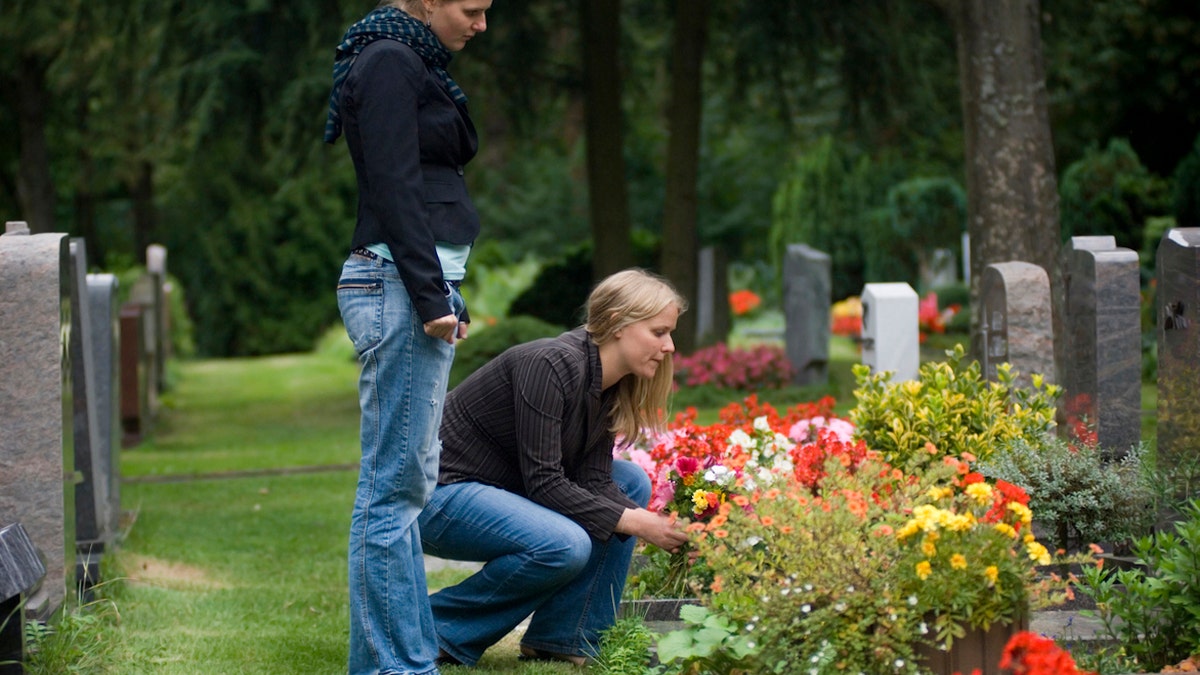
“The first year after any loss can be awful, but the holidays stand out in particular,” a grief expert noted. (iStock)
If you do decide to venture out, Feinglos said, it’s important to be prepared for Mother’s Day-focused events, including restaurant menu specials.
“If that feels like too much to handle, consider having an at-home dinner plan instead,” she suggested.
2. Reach out to others
Grief can be isolating, Feinglos said, and it’s easy to feel like you’re the only one in the world who has ever felt this way.
“But when you’re open and willing to ask for help, you might be surprised by how much better you’ll feel just saying that you’re having a tough time,” she said.
“Your first Mother’s Day after the death of your mom can make her absence feel even more real.”
If you’re feeling overwhelmed or just need someone to talk to, Feinglos said to take the initiative in reaching out, rather than waiting for someone to contact you.
“Pick up the phone, send a text or even just post on social media about how you’re feeling,” she suggested.
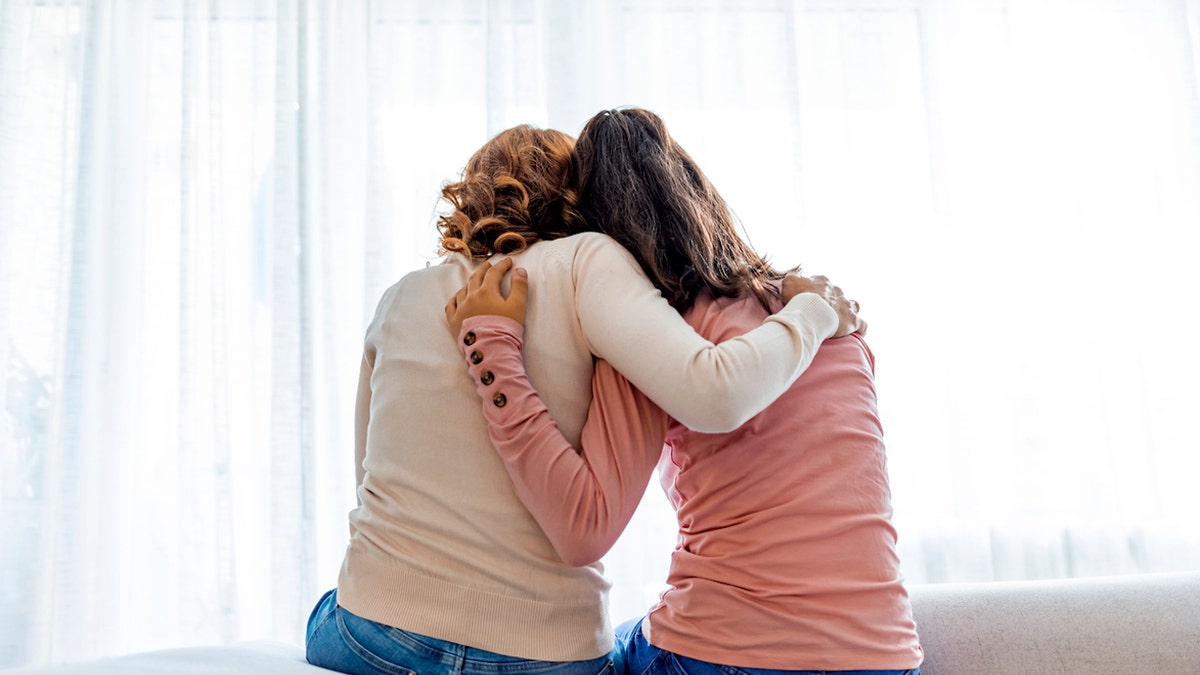
Those who are grieving should reach out to family and friends for support, an expert advised. (iStock)
“I have a feeling that your community will be ready and willing to offer their support.”
3. Let people support you
Those who are grieving may be afraid that they’re a burden on friends and loved ones, Feinglos noted.
“But here’s the thing: The people who care about you want to be there for you,” she said.
MOTHER’S DAY: THE BEST ONE-LINERS AND LIFE ADVICE I’VE EVER GOTTEN FROM MOM
“So, when your best friend offers to come over on Mother’s Day and hang out, or your sibling suggests a family Zoom call, say yes. Letting others show up for you can make the day feel a little less overwhelming.”
4. Create a ritual to make space for your grief
One of the most meaningful things you can do on Mother’s Day, according to Feinglos, is to “intentionally create a ritual that makes space for your grief.”

Journaling or writing a letter to your late mother is one way to process your feelings on Mother’s Day. (iStock)
“That could mean writing your late mother a letter and burning it or casting it into a body of water, visiting a place that was special to both of you, listening to her favorite music — or doing something that reflects her values and passions,” she said.
The idea is to do something intentional that helps you feel connected to your mom, even though she’s not physically there, the expert said.
“By creating space for your grief, you’re giving yourself permission to feel all the complicated emotions that come with loss.”
“Your relationship with your person can continue even when they’ve died,” Feinglos said.
GRATITUDE OVERSHADOWS GREAT LOSS, SAYS AUTHOR OF BOOK ABOUT LOSING WIFE TO CANCER
“By creating space for your grief, you’re giving yourself permission to feel all the complicated emotions that come with loss.”
5. Know that there are different shades of grief
Grief doesn’t follow any rules or timelines, Feinglos said — and it can look completely different from one person to the next, especially because every bond is unique.
“There’s no one ‘normal’ way grief plays out,” she said.
“For some, it might hit like a tsunami of tears, especially on gut-punch days like Mother’s Day.”
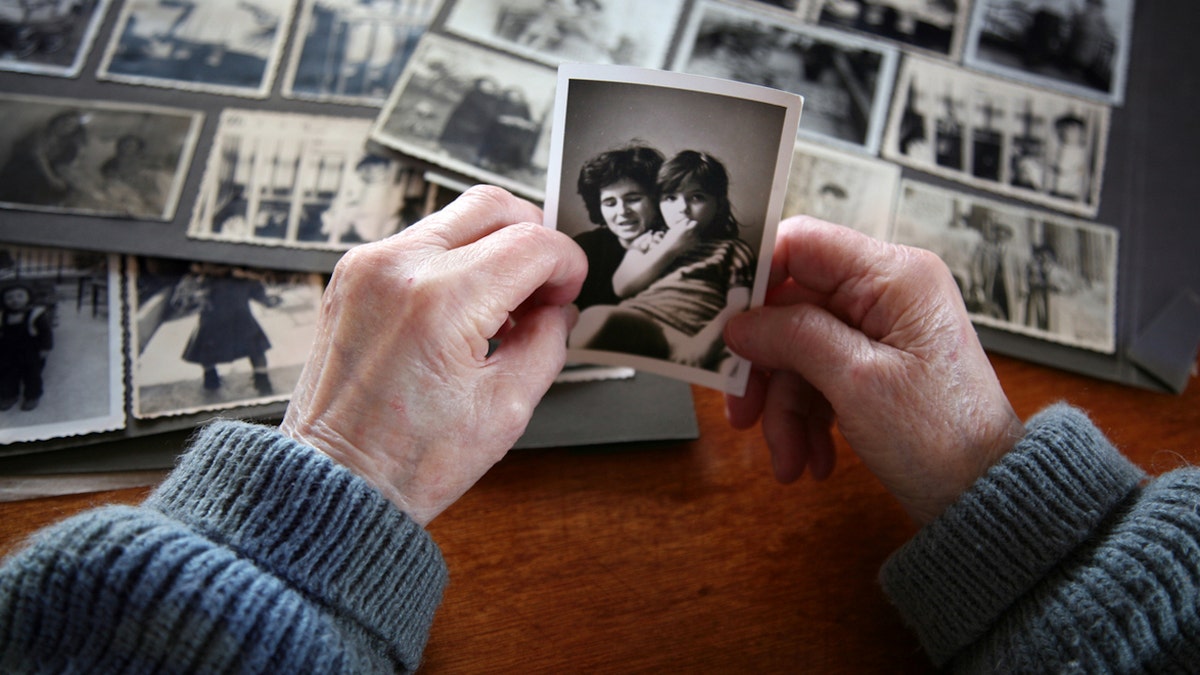
It’s important not to suppress or ignore feelings of grief on Mother’s Day, a mental health expert said. (iStock)
“Maybe you vacillate between being present one moment and feeling utterly numb the next, laughing through tears one day and feeling bitter anger the next.”
On a day like Mother’s Day, Feinglos said, you might find that your thoughts loop back to your loved one regularly, or you could tend to avoid anything that could stir up memories.
CLICK HERE TO SIGN UP FOR OUR HEALTH NEWSLETTER
Whatever way your grief manifests, Feinglos emphasized the importance of not trying to suppress or ignore it.

“At its core, grief underscores one truth: You’re alive, you’re human, and you’re going through a loss,” an expert said. (iStock)
“When we disregard our grief, it can pop back up in ways that are really inconvenient, or even scary — like lashing out at loved ones, feeling hopeless or [engaging in] risky behaviors,” she told Fox News Digital.
“Give yourself the space and time to relearn what your life is like now with this loss in mind,” she continued.
“At its core, grief underscores one truth: You’re alive, you’re human, and you’re going through a loss.”
For more Health articles, visit www.foxnews.com/health.
Health
Struggling to fall asleep? Try this simple trick to drift off quickly

For those who are struggling to get enough sleep, the ABCs may be the key to getting more Zzzs.
A sleep shortcut that’s making the rounds on TikTok uses the alphabet to help people drift off.
Sleep experts shared their input on the unconventional route to restful nights.
HAVING TROUBLE SLEEPING? IT COULD BE FOR THIS SURPRISING REASON, EXPERTS SAY
The technique isn’t new, but it’s been circulating on social media in recent weeks.
Here’s how it works: The wanna-be sleeper chooses a category — whether it’s song titles, vacation destinations or anything that strikes their fancy — and then thinks of something for every letter of the alphabet.
A sleep shortcut that’s making the rounds on TikTok uses the alphabet to help people drift off. (iStock)
For instance, if the category is colors, A might be Aqua, B could be Blue, C could be Chartreuse, and so on.
The idea is that, over time, the exercise will lull the person to sleep.
There are other variations of the alphabet hack, such as picturing each letter being written and erased to help induce sleep.
AMERICANS NEED MORE SLEEP, LESS STRESS, EXPERTS SAY, AS GALLUP POLL REVEALS TROUBLING FINDINGS
Sleep expert Jeff Kahn, the Chicago-based CEO and co-founder of Rise Science, maker of the sleep and energy tracker app RISE, pointed out that the alphabet method hasn’t been studied, but that it likely works by distracting the person from focusing on the inability to sleep.
“This is how the larger category of distraction techniques can help with sleep, anxiety and managing pain, among other challenges,” he told Fox News Digital.
“You can’t force sleep — and thinking about falling asleep or about how you can’t fall asleep is a surefire way to delay it.”

If lack of sleep is interfering with your quality of life, experts recommend speaking with a doctor about getting assessed for a sleep disorder or other underlying medical conditions. (iStock)
Dr. Chelsie Rohrscheib, a neuroscientist and sleep specialist at Wesper in New York, noted that many people experience an overactive mind when they’re trying to sleep, which makes it difficult for the brain and body to relax — leading to insomnia and poor sleep quality.
“The alphabet hack forces you to stop focusing on stimulating or stressful thoughts, which calms your brain activity and helps the brain enter the first sleep stage,” she told Fox News Digital.
Alternative sleep hacks
If the alphabet method doesn’t work, there are other creative techniques that could help you fall asleep.
“Alternatives include meditation and deep breathing exercises, which focus on not only quieting the mind, but also slowing your heart rate and breathing, which make it easier to enter sleep,” Rohr said.
“You can’t force sleep — and thinking about falling asleep is a surefire way to delay it.”
If none of these techniques are effective, he recommends getting out of bed and going to another quiet, dim area to do a relaxing activity, like reading or listening to music, until you feel sleepy.
Kahn agreed with that advice.

“You can’t force sleep — and thinking about falling asleep or about how you can’t fall asleep is a surefire way to delay it,” an expert said. (iStock)
“A good rule of thumb is, if you can’t fall asleep within 20 to 30 minutes, abandon the pursuit, leave your bed, and do things that are relaxing and distracting, in low or as little light as possible,” he advised.
“Let sleepiness wash over you, which it will, and then head back to bed. Sleep doctors call this a ‘sleep reset.’”
Another technique that works for a lot of people is progressive muscle tension and relaxation, both experts said.
CLICK HERE TO SIGN UP FOR OUR HEALTH NEWSLETTER
“A warm shower immediately before bed also helps to drop your core body temperature quickly once you get out, which stimulates the brain to feel sleepy,” Rohr added.
Optimizing sleep hygiene
“Decades of sleep science research shows that having excellent sleep hygiene is your best bet to regularly fall sleep, stay asleep, and to feel and function your best while awake,” Kahn told Fox News Digital.

Optimizing your sleep hygiene is the best way to “regularly fall sleep, stay asleep, and to feel and function your best while awake,” a sleep doctor warned. (iStock)
Common best practices include keeping a very regular sleep schedule, cutting off caffeine 12 hours before bedtime, avoiding late meals and alcohol, getting sunlight every morning — and keeping your bedroom as cool, dark and quiet as possible.
When to seek help
If you’ve tried everything — including optimizing your sleep environment and routine — and lack of sleep is still interfering with your quality of life, experts recommend speaking with a doctor about getting assessed for a sleep disorder or other underlying medical conditions.
“Because anxiety about sleep can precipitate more sleeplessness and sleeplessness feeds anxiety, I recommend seeking help sooner rather than later,” Kahn said.
For more Health articles, visit www.foxnews.com/health.
-

 Politics1 week ago
Politics1 week agoHouse Republicans brace for spring legislative sprint with one less GOP vote
-

 World1 week ago
World1 week agoAt least four dead in US after dozens of tornadoes rip through Oklahoma
-

 Politics1 week ago
Politics1 week agoStefanik hits special counsel Jack Smith with ethics complaint, accuses him of election meddling
-

 Politics1 week ago
Politics1 week agoAnti-Trump DA's no-show at debate leaves challenger facing off against empty podium
-

 Politics7 days ago
Politics7 days agoThe White House has a new curator. Donna Hayashi Smith is the first Asian American to hold the post
-

 News1 week ago
News1 week agoAs student protesters get arrested, they risk being banned from campus too
-

 News1 week ago
News1 week agoVideo: Police Arrest Columbia Protesters Occupying Hamilton Hall
-

 World1 week ago
World1 week agoNine on trial in Germany over alleged far-right coup plot






